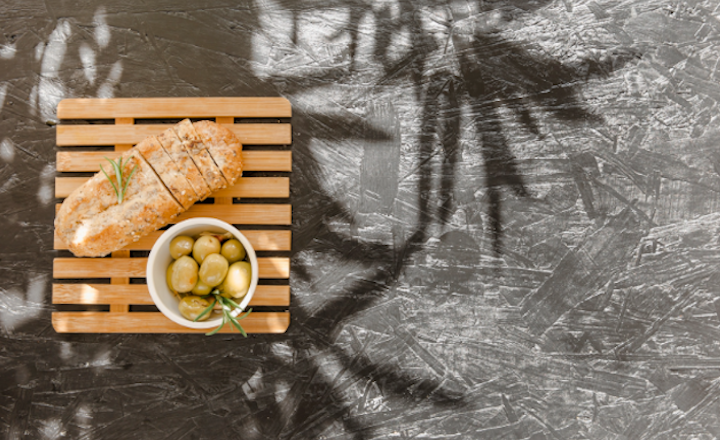
Polished concrete benchtops have become a sought-after feature in modern kitchen design. Their sleek, industrial aesthetic blends durability with contemporary style, appealing to homeowners and designers alike. These surfaces provide not only visual impact but also long-term practicality. With customisable finishes and colours, polished concrete adapts effortlessly to a range of interiors, reflecting a growing trend towards materials that combine function and design.
What Defines a Polished Concrete Benchtop?
A polished concrete benchtop is a manufactured surface made from a mix of cement, aggregates, and pigments. The material is cast into moulds and subjected to a thorough polishing process involving industrial grinding and sealing. Polished concrete benchtops Melbourne provide homeowners and designers with surfaces that feature a smooth, reflective finish, enhancing the natural beauty of the aggregates and pigments within the concrete.
The process begins with pouring the concrete mix into a benchtop mould. After curing, the surface is ground with progressively finer grits to achieve the desired finish, followed by sealing to protect against stains and moisture. This method results in a resilient surface suitable for a variety of interior styles, particularly those favouring minimalism or industrial themes.
Aesthetic Appeal in Modern Design
Polished concrete contributes a refined, clean look to any space. The reflective surface adds brightness and a sense of openness, while the seamless finish offers an understated elegance. This aesthetic versatility allows it to complement everything from rustic timber cabinetry to high-gloss modern finishes.
With a wide selection of colours, tones and surface textures available, polished concrete can be tailored to individual preferences. From soft neutrals to bold accents, the options allow for personal expression without sacrificing cohesion within the overall design scheme.
Within a kitchen, these benchtops integrate seamlessly with contemporary features such as handleless cabinetry, built-in appliances, and ambient lighting. Their aesthetic presence elevates the room while blending into a cohesive, well-planned interior.
Exceptional Durability and Performance
One of the standout qualities of polished concrete benchtops is their strength. The dense surface resists daily wear, including heat from cookware, scratches from utensils, and spills from food and drink. When properly sealed, the surface is non-porous, reducing the risk of stains and making it hygienic and easy to clean.
Research consistently highlights concrete’s ability to withstand high levels of stress and temperature. Its durability makes it suitable for both domestic kitchens and high-use commercial environments. Unlike other materials that may require frequent refinishing or replacement, polished concrete maintains its integrity and appearance over time.
Practical Advantages and Cost Considerations
In terms of maintenance, polished concrete offers notable advantages. Unlike wood or natural stone, it does not demand specialised cleaning products or periodic treatments. Routine cleaning with mild detergent is typically sufficient, and resealing, though necessary over time, is infrequent.
While the initial cost may vary based on customisation and installation complexity, the long-term savings in upkeep often outweigh the upfront expense. Its longevity and low maintenance contribute to an overall lower cost of ownership, making it a smart investment for both residential and commercial use.
Moreover, the inclusion of polished concrete can increase property value. Its modern, high-end appearance, combined with practical benefits, appeals to potential buyers looking for stylish and low-maintenance features in kitchens or bathrooms.
A Sustainable and Environmentally Friendly Option
Polished concrete also meets the growing demand for environmentally responsible materials. By using existing concrete slabs or incorporating recycled content such as crushed glass or repurposed aggregates, waste is significantly reduced. The polishing process itself is relatively energy-efficient compared to other flooring and surfacing techniques.
Its durability further supports sustainability by extending the material's lifecycle and reducing the need for replacements. Additionally, its low-emission surface contributes to better indoor air quality, with fewer allergens and less dust compared to traditional surfaces.
For eco-conscious homeowners, polished concrete offers a compelling balance of performance and environmental stewardship. Incorporating recycled elements into the mix not only enhances visual appeal but also supports broader sustainability goals within the home.
Conclusion
Polished concrete benchtops exemplify the fusion of modern design and lasting practicality. Their customisable appearance, high durability, and minimal maintenance make them a valuable addition to any contemporary kitchen. Beyond aesthetics, they offer strong environmental credentials, particularly when recycled materials are used.
By investing in polished concrete, homeowners benefit from a surface that not only meets daily demands but also elevates interior design and contributes to a more sustainable living environment. Whether part of a new build or a renovation, polished concrete benchtops deliver both visual impact and long-term value.
FAQs
Are polished concrete benchtops prone to cracking?
Hairline cracks can occur over time due to the natural curing process or structural movement. However, these are often minor and do not affect the benchtop’s integrity or performance. Proper installation and sealing significantly reduce this risk.
How often should polished concrete benchtops be sealed?
It is generally recommended to reseal the surface every two to three years, depending on usage. A quality sealant helps maintain resistance to stains and moisture, preserving the benchtop's appearance.
Yes. Pigments and aggregates can be added during the mixing process to create a wide range of colours and effects. This allows for bespoke finishes tailored to individual interior styles.
| < Prev | Next > |
|---|




